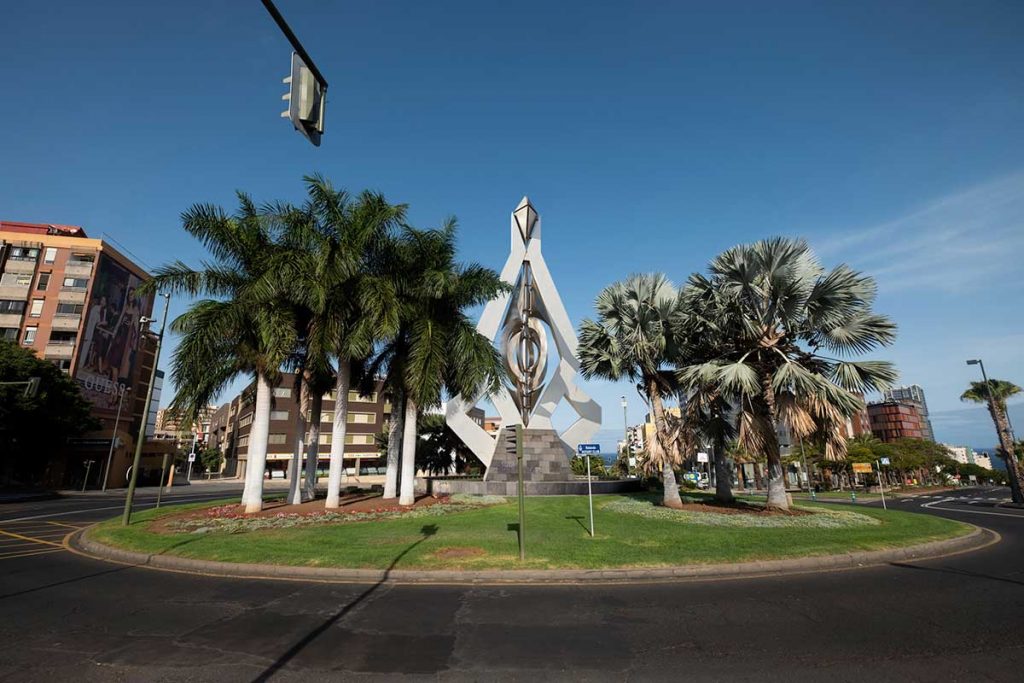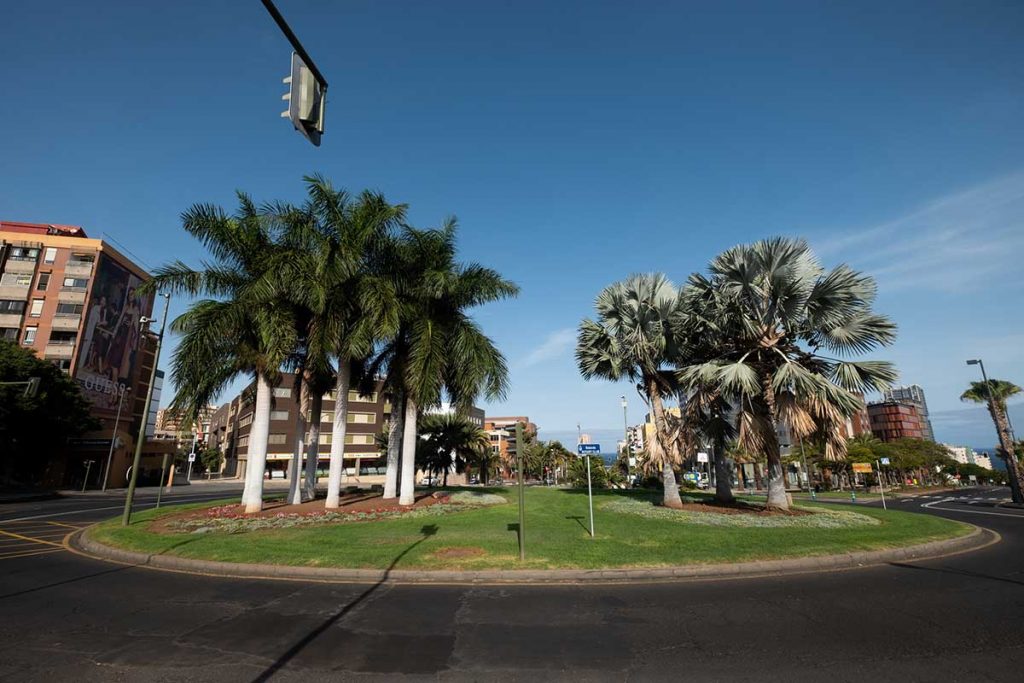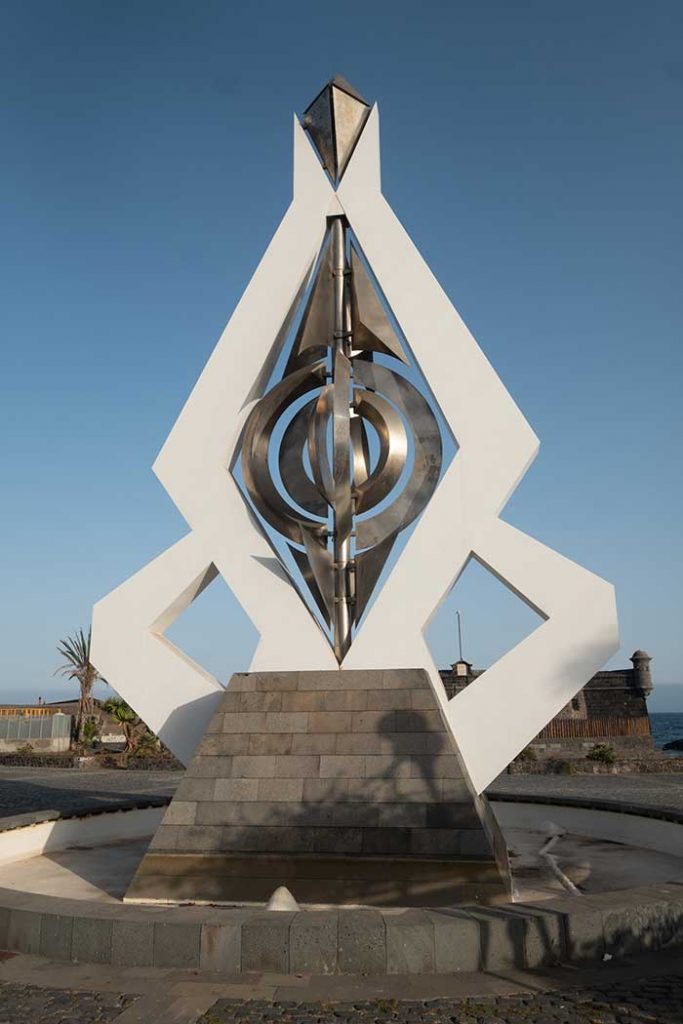
Only César Manrique could be able to imagine a large sculpture on a landfill. His amazing ability to contemplate a reality very different from conventional landscapes in view of the whole world was once again evident when, at the beginning of the 90s, he transferred his work team, then immersed in the drafting of the project of the greatest civil work of the artist in the capital of Tenerife, the Maritime Park, the need to erect a large sculptural emblem as a tribute to the people of Santa Cruz on the largest mountain of garbage on the Island, which already then wanted to paint green and which today is a unique palmetum with hundreds of plant species from all over the world. It was his particular icing and his personal signature to the splendid pool complex that was beginning to take shape in the plans.
On the way back from a trip to Marbella to learn about the proposal made by Mayor Jesús Gil to build a large auditorium in an open-air quarry -where today the international Starlite festival is held-, Manrique, a great lover of symbolism , he drew in the office of his friends and collaborators Juan Alfredo Amigó and José Luis Olcina, on Calle San José number 24, a sketch of the iron and steel mobile called to become an icon of the capital of Tenerife. “Let’s draw the Tribute to Santa Cruz”, He commented in the office, and began to make the basic outlines of the monument. It never occurred to anyone that four days later the artist would lose his life, at the age of 73, in a traffic accident on his home island, a few meters from his foundation.
That drawing, which remained in a drawer for more than two years, was rescued by Juan Alfredo Amigó and José Luis Olcina, the two road engineers who worked side by side with Manrique in the last 25 years of his life, while the works progressed from the Maritime Park. Both, aware of the value of the latest creation of the Lanzarote painter and sculptor, decided to carry out their farewell project and thus communicated it to the City Council. Caesar’s idea of elevating the mobile sculpture to the sky in the present Palmetum area was scrapped for two reasons. First, because at that time it was still a garbage dump (the degassing network and breakwater had not even been built yet to prevent the leachate from ending up in the sea) and second, because a place of such amplitude and so high required a work of a colossal size, which was economically unfeasible.

A different alternative to its current location in the Plaza del Castillo Negro was then considered: the new roundabout included in the Santa Cruz road plan, just at the entrance of the capital, at the confluence of Manuel Hermoso Rojas and Benito Pérez Armas avenues. , an option initially defended by the engineers, who understood that the design was better adapted to a more central place with greater movement of vehicles and pedestrians and that, in addition, it would become a symbol of the city there. But eventually the idea was scrapped because the gazebo had not yet been created.
After several meetings with the Santa Cruz City Council, it was finally decided to place it in front of the Parque Marítimo, a location that was welcomed by the business group Domingo Alonso, sponsor of the sculpture, when they understood that the inaugural plaque in which the economic support appeared The company was more visible to passersby at that point in the city.

Despite its volume and technical characteristics, the engineers assure that it is an easily removable and transportable sculpture, which is why they consider a change of location to the roundabout at the entrance to the city feasible. In fact, both do not rule out that one day their original idea of erecting César Manrique’s tribute to Santa Cruz in the location between the two central avenues may come true.
On Juan Alfredo Amigó and José Luis Olcina fell the responsibility of interpreting the design and engineering of the posthumous figure of Manrique (as happened with the Maritime Park), while its construction was carried out by Aquilino Dorta Pérez, a professional with a extensive background in mobile works in Lanzarote. The Tribute to Santa Cruz, 15 meters high, 9 wide and 6,500 kilos, it was built on a fixed steel structure lined with white iron and another mobile on an internal stainless steel shaft with 16 blades that rotate in the direction of the wind. The upper part was solved in a diamond shape and the lower part was complemented with two inverted pyramids.
The monument was officially inaugurated by the then mayor of Santa Cruz de Tenerife, Miguel Zerolo, on September 22, 2000, eight years after the death of the author of the idea and the sketch. There, in the Plaza del Castillo Negro and next to the Casa de la Pólvora, two historical emblems of the chicharrera capital, remains the farewell signature of César Manrique, who never imagined that that improvised sketch in the San José street office would mean much more than a tribute to Santa Cruz. He had actually drawn the eternal gratitude of a city and an island for his genius.
















